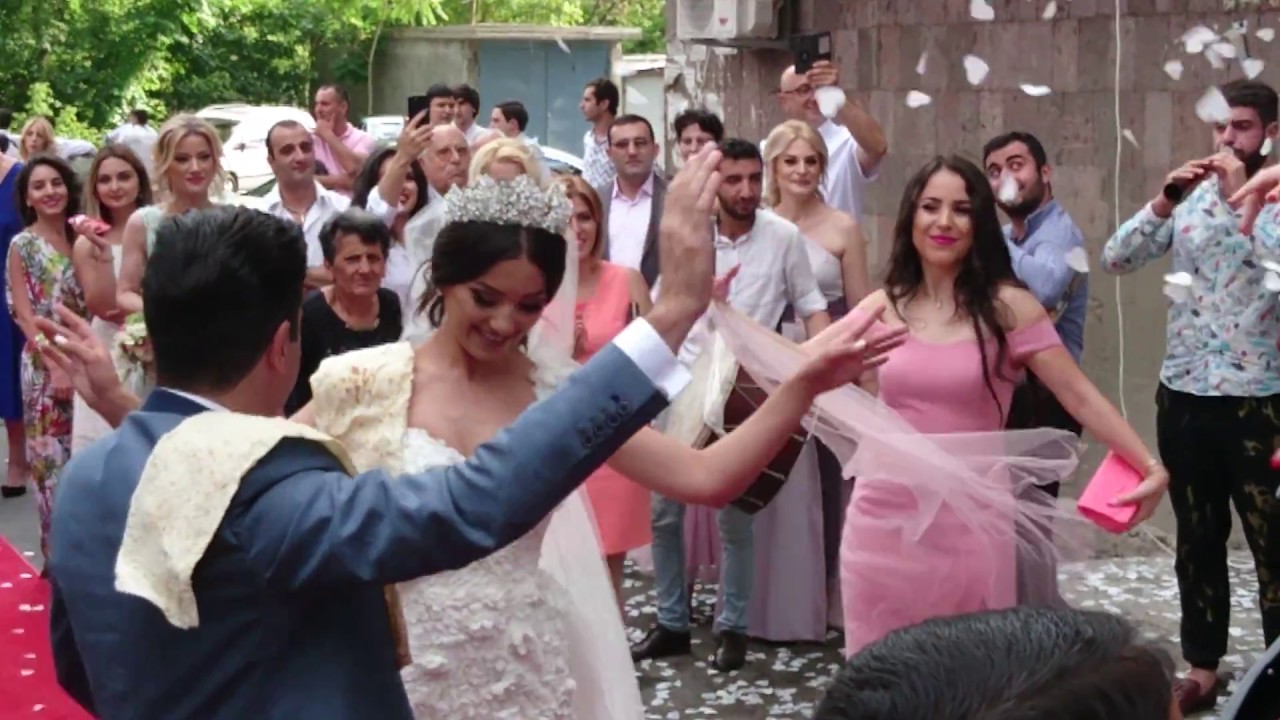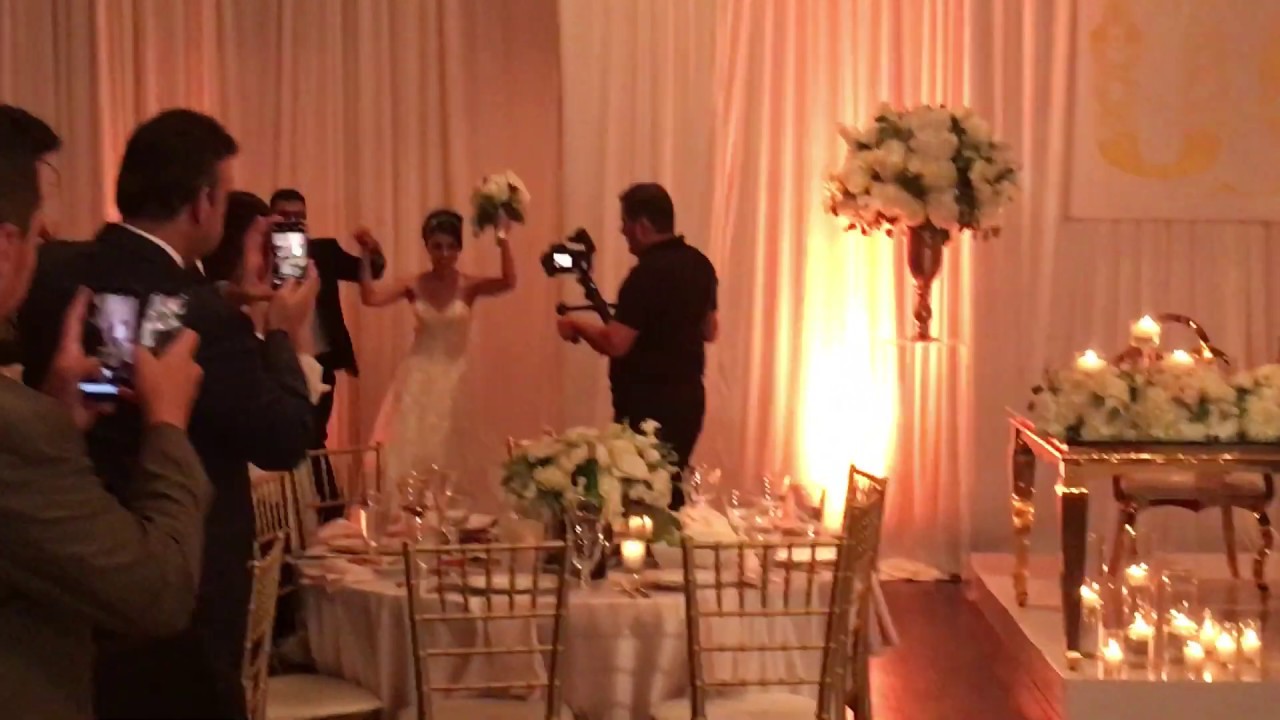Armenia is politically and culturally aligned with Europe but also has deep connections to Western Asia. This unique position gives the country a distinct identity.
As the first nation to officially adopt Christianity, Armenia has a storied spiritual and cultural heritage. This ancient history has given rise to a variety of unique and fascinating wedding traditions in Armenia.
Below are 23 Armenian wedding traditions that beautifully showcase the country’s rich heritage and customs, offering insight into its unique blend of European and Asian influences.
Amazing Armenian Wedding Traditions You Need to Know
Before the Wedding
1. Khosk-Arnel (Asking of the Hand)
Every step of an Armenian wedding is highly family-oriented; the families are involved in the planning and execution of the wedding. As such, both families need to be okay with their children marrying each other.
The groom-to-be’s family organizes a formal dinner with the bride-to-be’s family. This dinner is frequently held at the bride-to-be’s house. Both families are anticipated to provide flowers, chocolate, and Armenian Cognac for the event.
Tea is served before the talks begin, but no one is allowed to take a sip before the groom-to-be formally asks for the woman’s hand in marriage. Once the bride and her family agree, wedding planning commences. They can drink the tea as they discuss the ceremony’s details.
2. Khosk-Kap
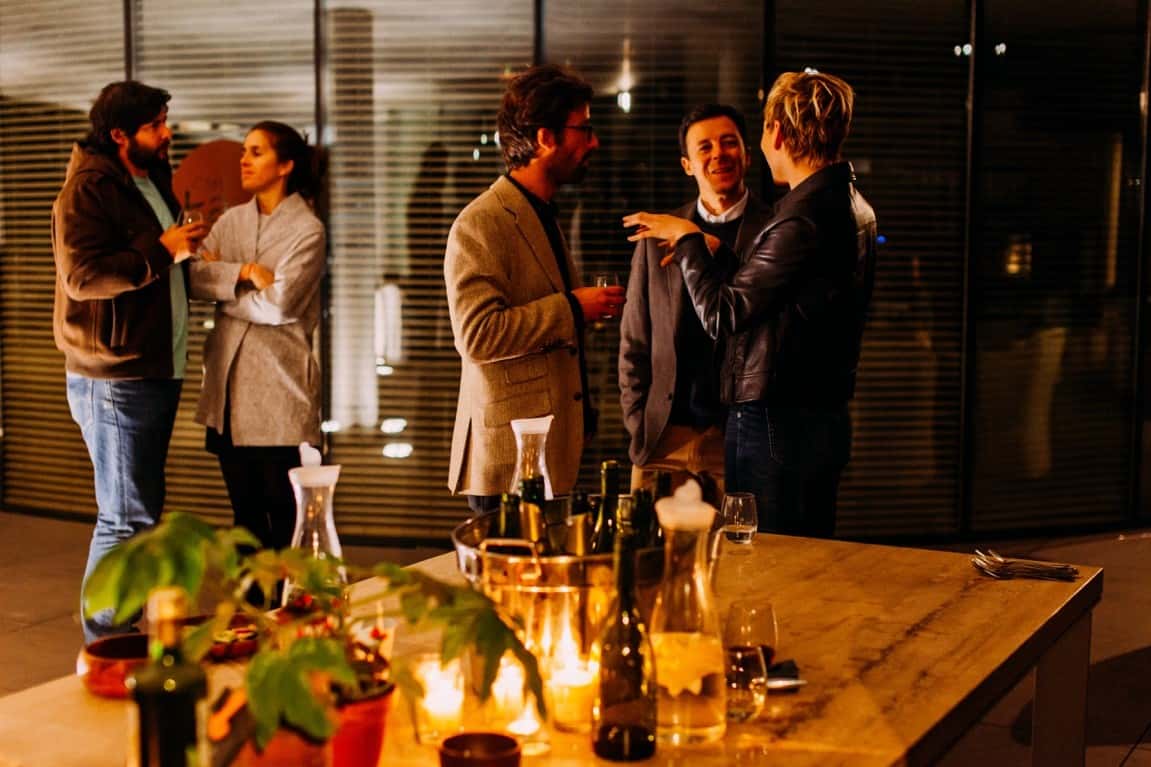
The Khosk-Kap is highly similar to the Khosk-Arnel. The main difference between the two is that in a Khosk-Kap, close friends and extended family on both sides are also invited. This allows them to socialize and know each other better.
3. Throwing an Engagement Party
An engagement party is a type of pre-wedding party wherein the newly engaged couple announces and celebrates their engagement. Though Americans do not always throw an engagement party, Armenians find it an integral part of the process.
During the party, the groom will be given five items to present to his bride-to-be. These items are placed on a tray, which is then placed in front of the groom. These items correspond to vows she will make.
- Ring
- Earrings
- Bracelet – this is a promise that during their marriage, she will be faithful and loyal to her husband.
- Red dress
- Veil – both the veil and the red dress symbolize a promise to be a “true bride” to her husband.
4. Choosing the Best Man and Maid of Honor
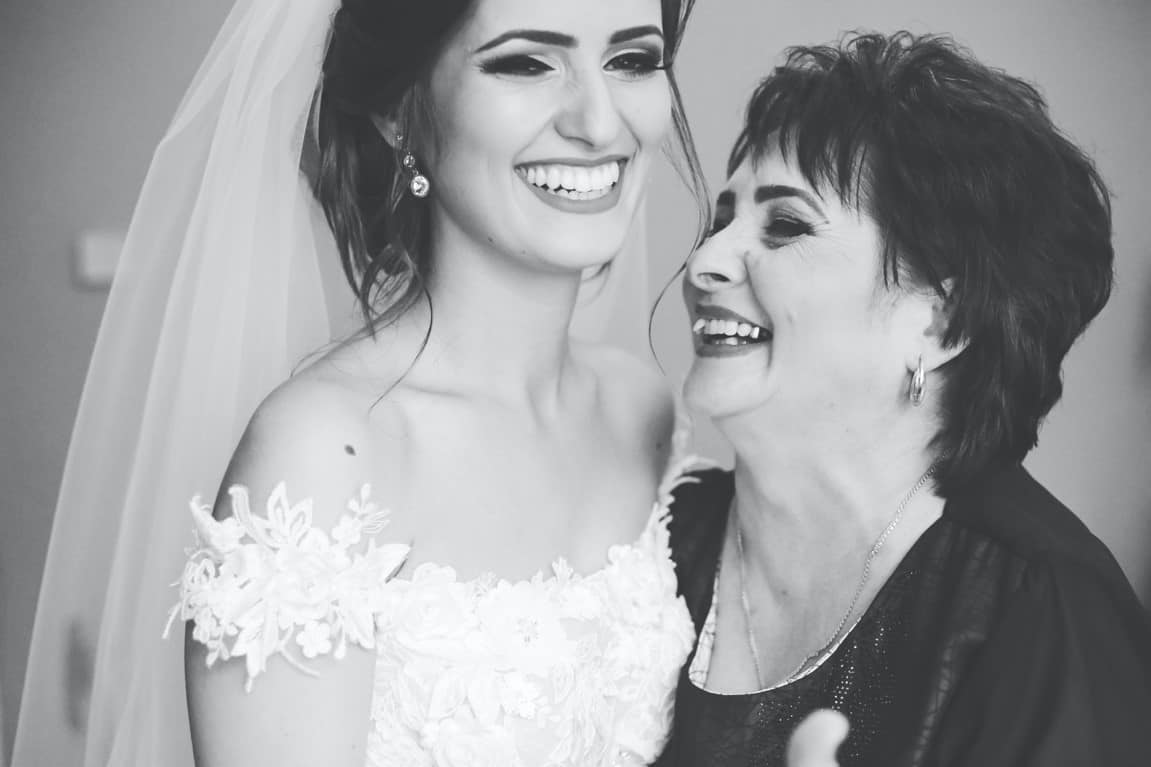
An Armenian best man is referred to as the “kavor” or godfather, and grooms choose their kavor based on trust and respect. Commonly, older men who have been married for a long time are chosen for the role.
The maid of honor is called the “kavorkin,” which translates to “the wife of the kavor” or “godmother.” With that said, the maid of honor is typically the wife of the best man.
During the reception, the best man and maid of honor are seen as the “toastmasters.” They will dedicate heartfelt wishes, songs, and poetry to the newlyweds.
5. Wedding Ceremony Pre-Party
On the morning of the ceremony, it is common for the groom’s family to host morning-of ceremonies at their house. They serve appetizers, allow people to socialize, and get the party started with music. People are encouraged to make toasts for the couple.
6. The Presentation of Sinis (Gift-Wrapped Basket)
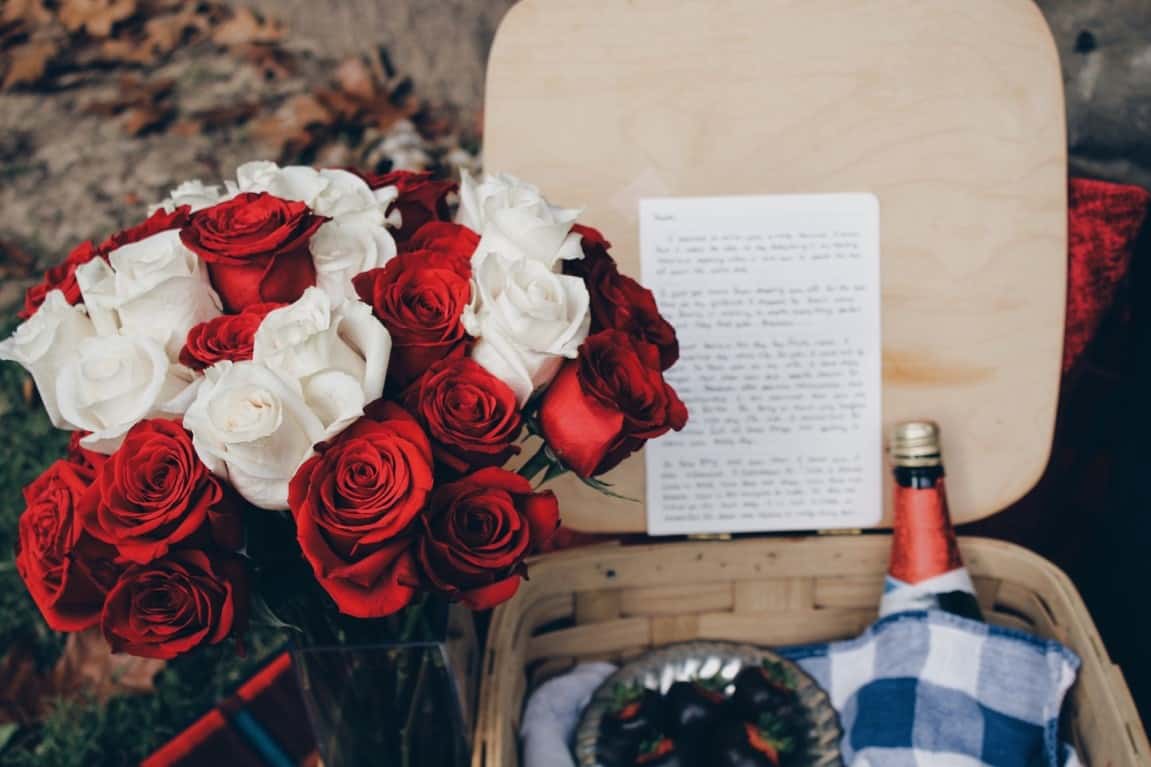
Before the bride begins preparing for the ceremony, the best man will make an appearance. He announces his arrival by singing and dancing on his way to the bride’s house. He then presents a sinis for the bride, which is a traditional gift-wrapped basket that is part of Armenian wedding traditions.
This basket contains a multitude of items, such as perfume, chocolate, shoes, brandy, and flowers. These items serve a common purpose: to help the bride start getting ready.
7. Putting Money in the Bride’s Shoes
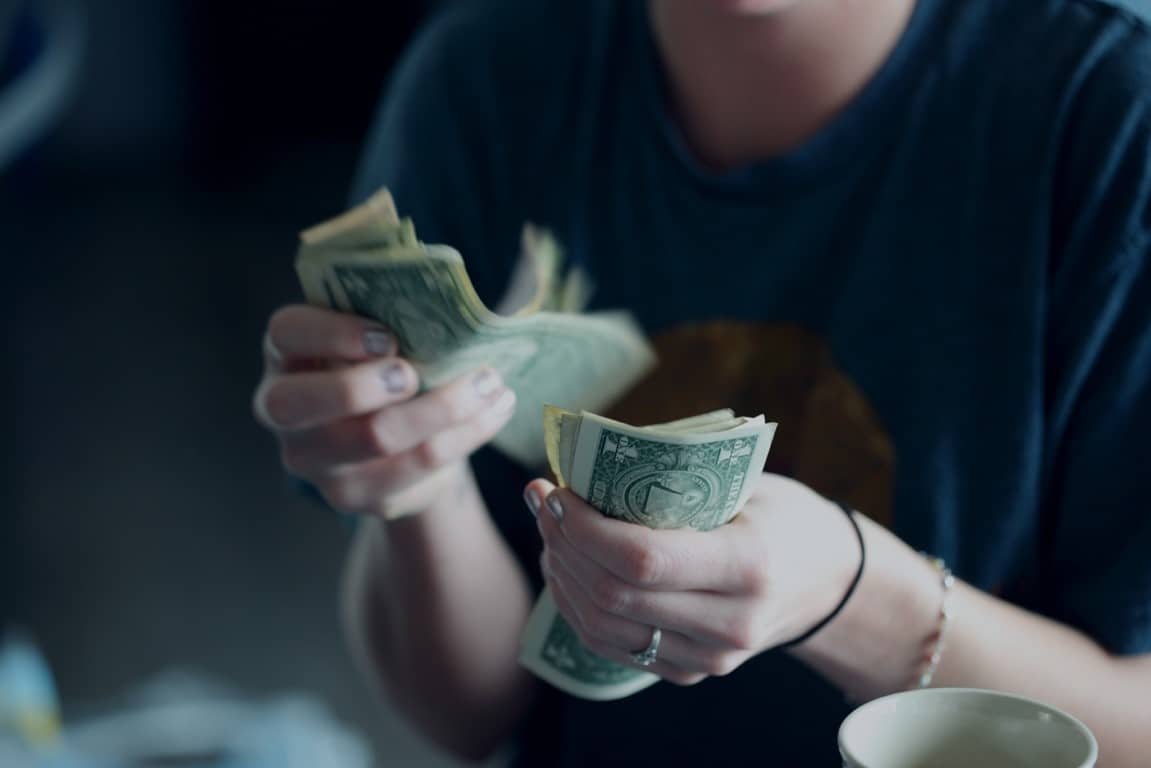
As the bride prepares for her special day, her brother will put some money inside her shoes. He has to do this without getting noticed by the bride-to-be. This Armenian wedding tradition represents good luck for the bride-to-be.
If the bride has no brother, the closest male relative can take the role. This can be a cousin, an uncle, a nephew, and a family friend.
8. Shoes for Ransom
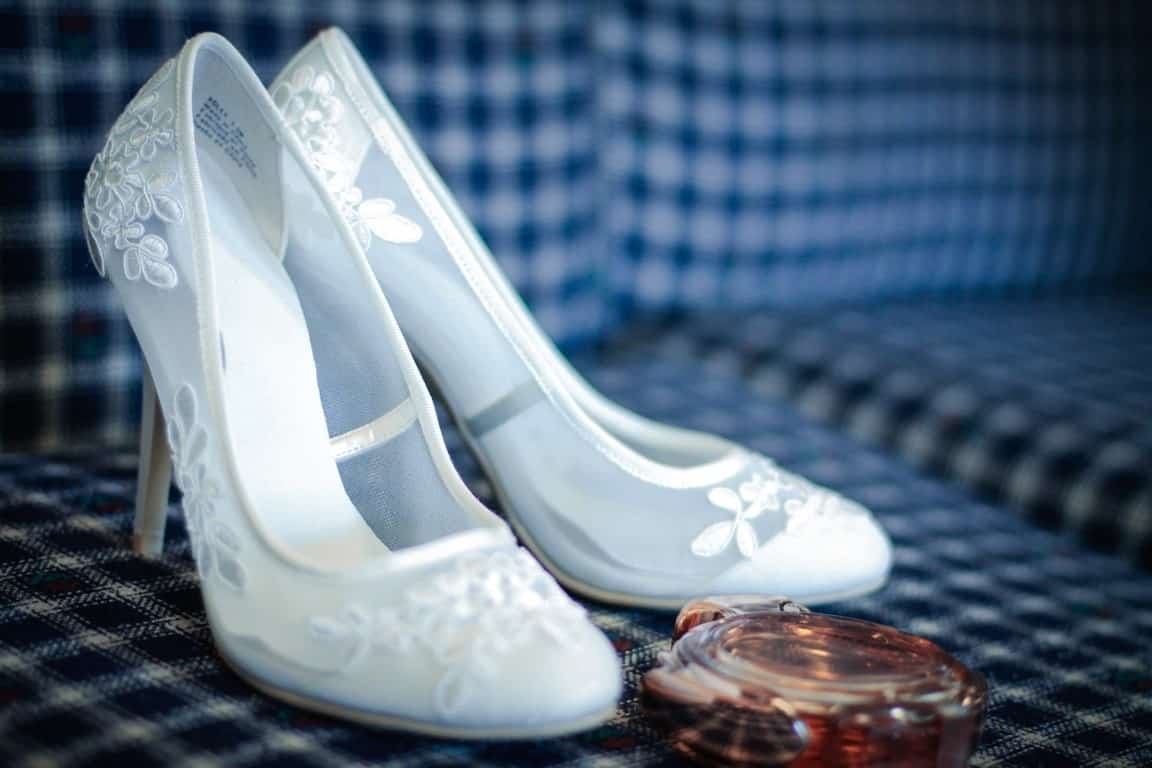
During preparations, a close male relative will help the bride put on her shoes. Before doing so, the male relative can hold the shoes for ransom. The groom, or anyone from the wedding party, must pay him some money before he lets the bride wear the shoes.
As long as it is not taken too far, this is a fun way to alleviate the nervousness in the room.
9. Listing Names Under Her Shoes
Before she walks down the aisle, the bride must write her bridesmaids’ names on the sole of her shoes. She can also include any unmarried female relative in the list. She must keep this pair of shoes after the special day.
Over time, each of her bridesmaids will get married. As they do, she will cross off their names. In a way, writing their names is a way to manifest marriage for them.
10. Putting the Veil On
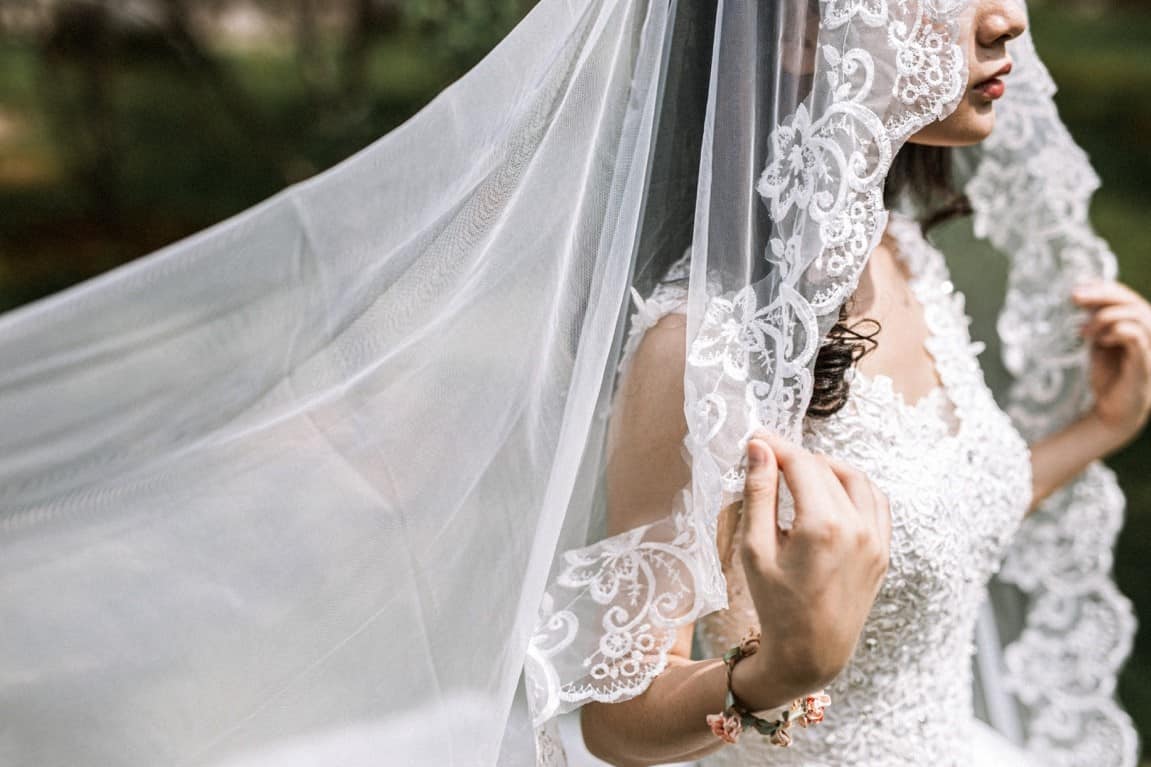
The bride will go around the dressing room holding her veil. She will then circle it over every single female’s head. This is believed to bring luck to their lives, especially in meeting the perfect man to marry.
After this, the kavorkin or maid of honor will place the veil on the bride-to-be’s head. Once again, this symbolizes well-wishes for luck and good fortune.
11. Bouncers at the Door
Continuing the theme of holding something for ransom, close younger male relatives also block the door of the bride’s house. In some cases, a sword is used to block the doorway. This is done either individually or in groups. Regardless, the aim is to prevent the bride from leaving the home. A similar tradition is observed in Bosnian weddings.
The groom, kavor, or a relative of the groom can pay off these bouncers. Sometimes, they can all contribute to the payment. The price to pay is dependent on the bouncers themselves. Typically, they will reject the first offer and ask for a higher amount of money.
12. Atchka Ooloonk (Evil Eye Charm)
During the Wedding
13. The Bride’s Attire
Doves hold an important meaning in Armenian weddings. During the reception, doves are released to symbolize good fortune and love for the newlyweds and their years to come.
Even the color palette of the crown has an essential symbolism. The contrasting combination of red and green represents life and all the sacrifices the bride will make for the groom, their relationship, and their future family.
14. Church Wedding
As mentioned above, Armenia is the first country to officially recognize Christianity as its religion. Thus, most Armenian weddings are held in a church. A priest acts as the officiant, and the language used for songs and prayers is Armenian. These weddings generally take an hour to finish.
15. Drinking from the Common Cup
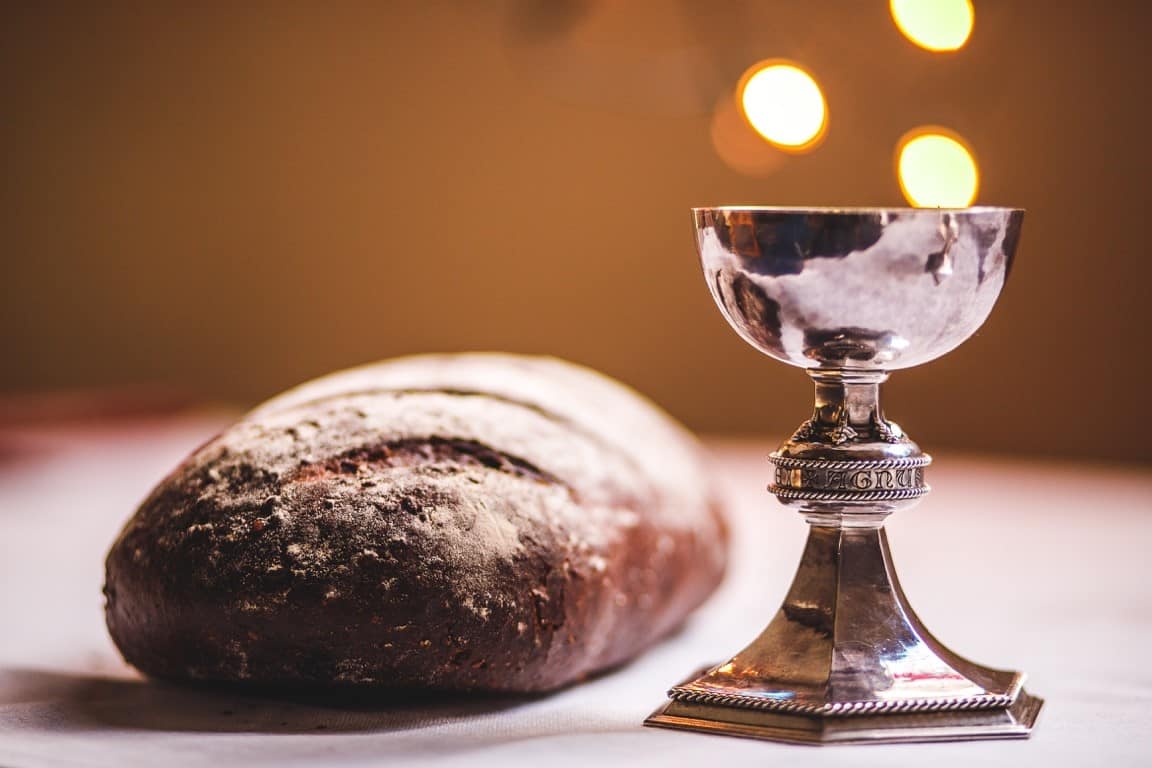
In Orthodox Armenian weddings, the officiant of the wedding will ask the couple to drink wine from a “common cup.” This act represents their coming together in one relationship under the eyes of God. Drinking from this cup also symbolizes forming a union with Christ.
Afterward, the best man and maid of honor will also drink from this cup. This symbolizes their pledge to guide the couple as they embark on a godly marriage. Through this, it becomes clear why choosing a godfather is a big deal for Armenian grooms.
While the couple says their vows, a cross will be held over their heads by the godfather. In doing so, he is blessing their words.
16. Tossing Coins
The wedding ceremony ends with the recessional. While the newlyweds traverse the aisle and exit the church, guests will throw coins. Not only is this a form of celebration, but it is also a representation of success, good fortune, and wealth.
After the Wedding
17. A Warm Welcome for the Bride and Groom
Before the couple’s arrival, the groom’s mother will put a plate by the venue’s entrance. The newlyweds then have to break this plate. Armenians view this act as a symbol of good luck and fortune.
Once that is done, the groom’s mother will place lavash on the couple. Lavash is a traditional Armenian flatbread made from flour, salt, and water. By putting lavash on the newlyweds’ shoulders, she is welcoming the bride as a new member of the family.
Lastly, the groom’s mother will also have them eat honey. In Armenian beliefs, honey is a symbol of happiness.
18. Boisterous and Fun Reception
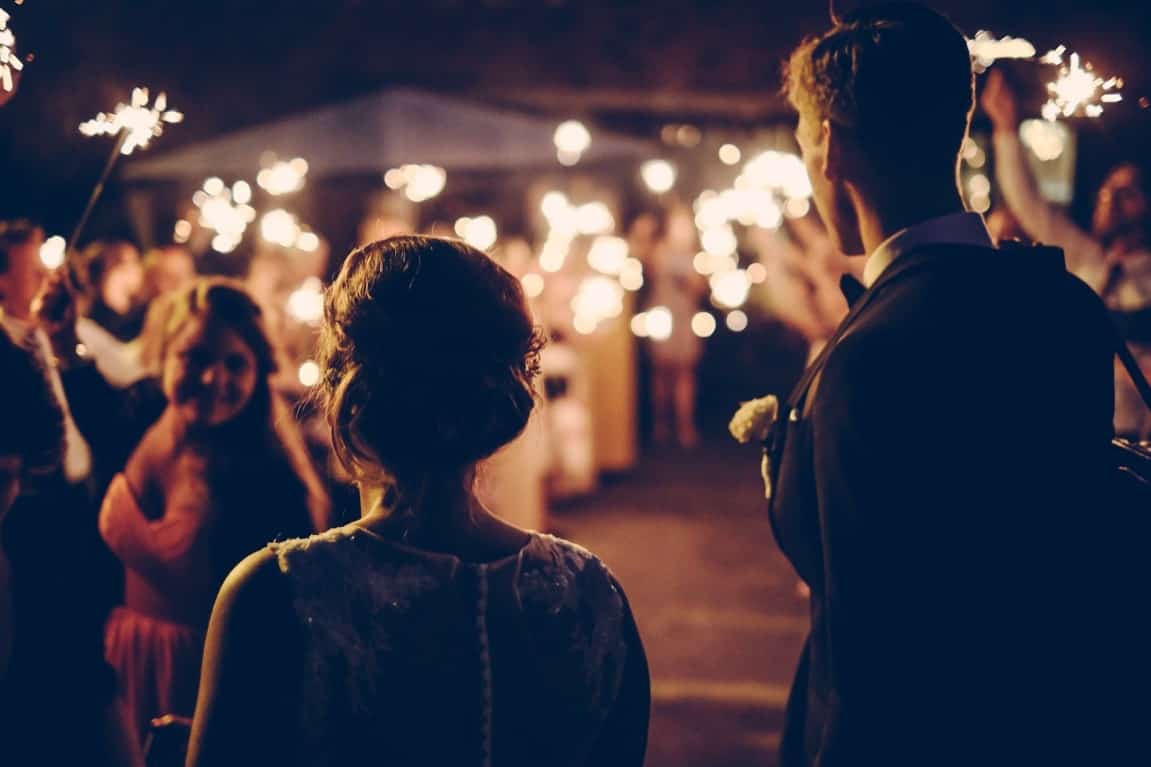
Similar to Egyptian and Lebanese wedding receptions, it is part of the Armenian wedding tradition to have a massive, fun-filled reception. Large amounts of food and drinks will be served, songs are played nonstop, and guests are encouraged to dance the night away.
Some dishes you can expect to see at an Armenian wedding reception include:
- Bourek
- Kabob
- Babaghanoush
- Dolmas
- Hummus
Finding the perfect venue is significant for a successful reception. A banquet hall is preferred by the majority of Armenians, as it can accommodate a large number of guests; it is common for 200 to 500 guests to be in attendance.
To welcome the newlyweds to the reception, the wedding party will line up and hold some flowers. They will then raise their arms and form an arch with the flowers. This marks the path through which the newlyweds will enter the venue.
As such, guests are expected to enjoy and party for many hours. They must eat more than they usually do, listen to or give toasts to the newlyweds, and participate in games if there are any. Likewise, they should also partake in traditional dances with other guests. There are two popular types of traditional dances:
- Shabash – during this dance, guests can throw money to the newlyweds to wish them good fortune and wealth. However, the money is later collected and handed to the musicians.
- Yarkhushta – also known as “clap dance,” this dance involves pairs of men facing each other. They approach each other in movements that mimic leaping goats.
Armenian wedding receptions frequently last beyond midnight. By then, everybody will be tired. However, leaving the party will prove to be difficult; someone will encourage you to dance to one more song. Between the hug and goodbyes, it might take another half hour before people can finally leave.
19. Tzaghkatz Khndzor (Flourished Apple)
In this Armenian wedding tradition, a groomsman holds a sword. An apple, filled with coins, will be placed on top of the knife. The rest of the sword is decorated with candies, green and red ribbon, and other materials. This “flourished apple” symbolizes a wish for a “sweet life” for the newlyweds.
20. Going Around the Venue
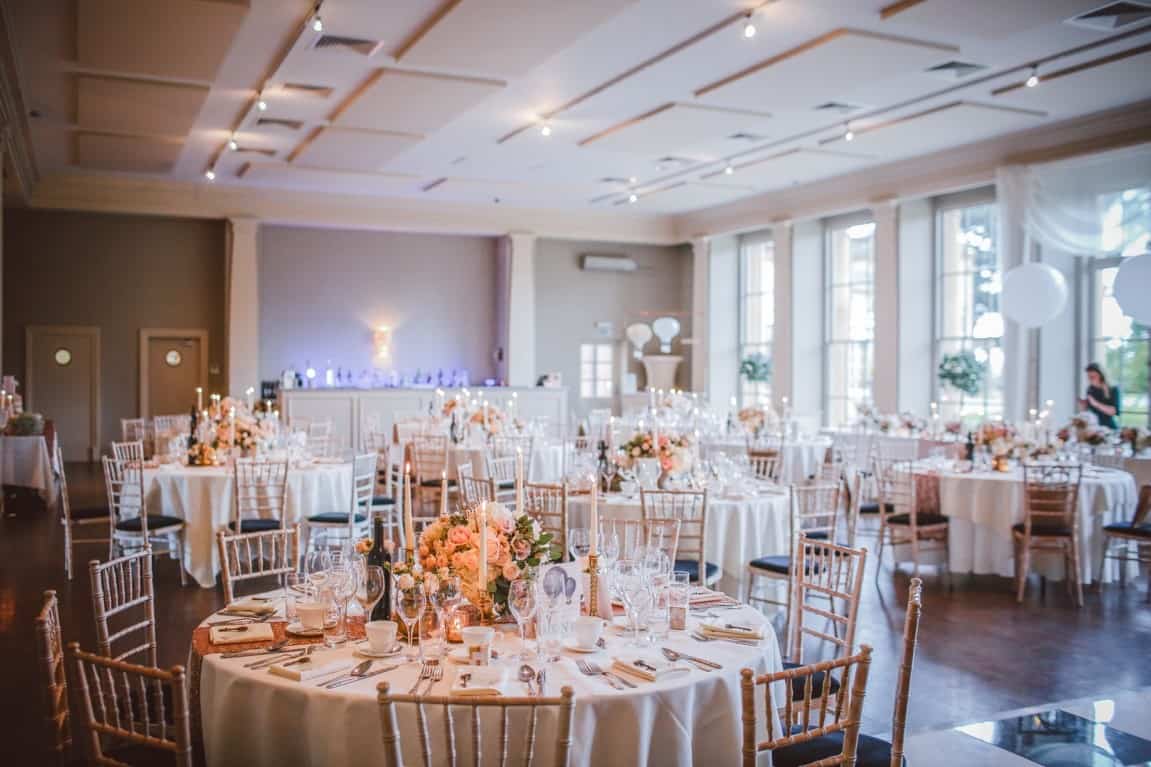
While the guests eat, the newlyweds will go around the venue to socialize with their guests. They will exchange greetings, gratitude, and warm wishes. The guests will ask them to sit for drinks but given that there are many tables to get to, they may respectfully decline. Instead, they can take one sip from the drink and continue.
21. Embroidered Pillow
An embroidered pillow is a popular choice for an Armenian couple’s wedding favor. There is a well-known Armenian saying that goes, “May you grow old on one pillow.” This is said to newlyweds as a way of praying for a strong, lifelong marriage. The saying is then stitched onto small pillows and distributed to guests as a token of appreciation for their presence.
This saying is also frequently said in wedding toasts and speeches. Likewise, the phrase is often printed on wedding invitations and programs.
22. Tarosiki (Souvenir Boxes)
23. Giving Lavish Gifts
As with any other wedding, guests in an Armenian wedding often bring gifts for the newlyweds. Money is the preferred type of gift. However, other than monetary and practical gifts, they can also give jewelry to the newlyweds. Godfathers usually give the most extravagant gift.
Final Thoughts
It is important to remember that although these are traditions, there will be variations across regions, families, and even diasporic communities. Ultimately, families are allowed to personalize these Armenian wedding traditions. Moreover, they are not required to observe every tradition listed above.
